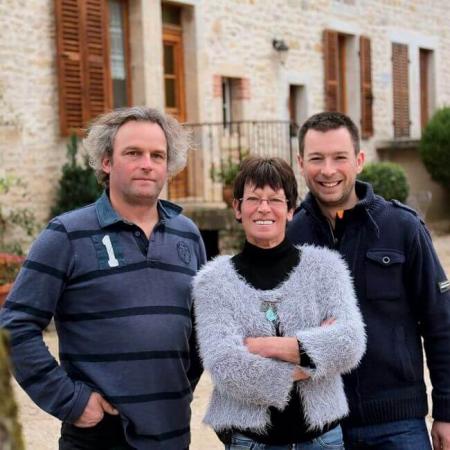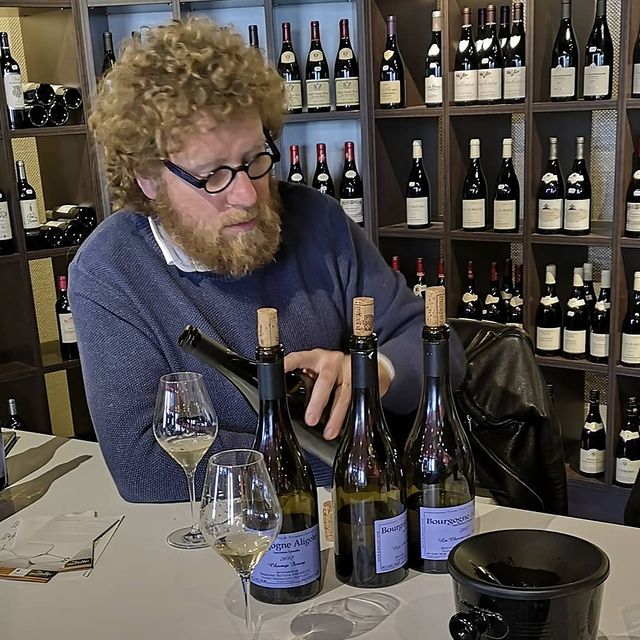30 Aprile 2020

Domaine Bart e il Rinascimento di Marsannay
Fino a poco tempo fa, Marsannay, l’avamposto più settentrionale della Côte de Nuits, era considerata la denominazione più sottovalutata e trascurata della Borgogna, con nessuno dei suoi vigneti classificato al di sopra della categoria “Villages”. Ma i perseveranti viticoltori sono riusciti a migliorare lo status di Marsannay per esaltare la qualità e l’integrità dei suoi vini con 14 vigneti sul punto di essere ufficialmente riconosciuti come Premier Cru nella denominazione che copre i comuni di Marsannay-la-Côte, Chenôve e Couchey alla periferia di Digione.
Nessuno è stato più perseverante nella corsa per lo status di Premier Cru di Martin Bart, del Domaine Bart, l’azienda vinicola che gestisce con la sorella Odine e suo figlio Pierre.

Domaine Bart dispone di 22 ettari di vigneti, compresi appezzamenti di alcuni dei terroir più apprezzati di Marsannay, sparsi tra sette diversi lieux-dits, tutti coltivati in modo sostenibile.
Marsannay figura in primo piano nelle selezioni Bart con Clos du Roy, Les Longerois, Les Echezots, Au Champ Solomon, Saint-Jacques, Les Grandes Vignes, Les Finottes e Les Favières (che produce anche un vino bianco). Oltre a ciò, Bart ha terreni a Fixin per il Premier Cru Les Harvelets e preziosi appezzamenti nei Grands Crus di Chambertin Clos de Bèze e Bonnes Mares.
Un’attenzione precisa è rivolta all’espressione dei diversi terroir, privilegiando ogni possibile scorciatoia di stile che possa essere più attraente o immediata. Ogni vino esprime chiaramente un tipo di terreno distinto. Come spiega Martin Bart: “Facciamo vini fruttati nello stile classico. Le parole chiave del nostro domaine sono frutta ed equilibrio, equilibrio tra frutta, acidità e tannini. Non produciamo vini di grande estrazione perché il nostro obiettivo principale è il rispetto della frutta.”
Durante la vinificazione l’uso di uva a grappolo intero rimane piuttosto marginale (solo tra il 10 e il 20% in media) e non ci sono rimontaggi per i rossi. L’utilizzo di rovere nuovo è modesto, con una percentuale di circa il 25% per i singoli cru di vigneto e di circa il 50% per i Grands Crus di Chambertin Clos de Bèze e Bonnes Mares.
Una delicata tensione interna traspare in tutti i vini di Domaine Bart, che, con l’invecchiamento, offrono
un’integrità cristallina-classica, vini artigianali che si ergono come esempi del Rinascimento di Marsannay.
NOTA: Marsannay è l’unica denominazione della Côte d’Or con disposizioni per la produzione di tre tipi di vino: bianco, rosso e, unicamente, rosato. Anche se raro, Domaine Bart è uno dei principali produttori di Marsannay Rosé con più di 10.000 bottiglie all’anno. [Il vino sarà discusso in dettaglio in una prossima edizione della Newsletter Heres].

ENGLISH
Domaine Bart and the Renaissance of Marsannay
Until recently, Marsannay, the northernmost outpost of the Côte de Nuits, figured as the most undervalued and overlooked appellation of Burgundy, with none of its vineyards classified higher than the category of “Villages.” But persevering winemakers have managed to upgrade the status of Marsannay to exalt the quality and integrity of its wines with 14 vineyards on the verge of being officially recognized as Premier Cru in the appellation covering the communes of Marsannay-la-Côte, Chenôve and Couchey on the outskirts of Dijon.
None has been more persevering in the drive for Premier Cru status than Martin Bart, of Domaine Bart, the winery that he runs with his sister Odine and her son Pierre. Domaine Bart has 22 hectares of vineyards, including parcels of some of the most esteemed terroirs of Marsannay scattered between seven different lieux-dits, all of which are farmed sustainably.
Marsannay figures prominently in the Bart selections with Clos du Roy, Les Longerois, Les Echezots, Au Champ Solomon, Saint-Jacques, Les Grandes Vignes, Les Finottes and Les Favières (which also produces a white wine). Beyond that, Bart has holdings in Fixin for the Premier Cru Les Harvelets and precious plots in the Grands Crus of Chambertin Clos de Bèze and Bonnes Mares.
Precise attention is given to the expression of different terroirs, taking precedence over any possible shortcuts in style that might be more attractive or immediate. Each wine clearly expresses a distinct type of terrain. As Martin Bart explains, “We make fruity wines in the classic style. The key words at our domaine are fruit and balance, balance between fruit, acidity and tannins. We don’t produce big extracted wines because our main aim is to respect the fruit.”
During vinification the use of whole-cluster grapes remains rather marginal (only between 10 and 20% on average) and there is no pumping over for the reds. Use of new oak is modest, figuring at about 25% for the single vineyard crus and at about 50% for in the Grands Crus of Chambertin Clos de Bèze and Bonnes Mares. A delicate internal tension shines through in all the wines of Domaine Bart, which, with aging, deliver a crystalline integrity—classic, handcrafted wines that stand as exemplars of the renaissance of Marsannay.
NOTE: Marsannay is the only appellation of the Côte d’Or with provisions for the production of three types of wine: white, red and, uniquely, rosé. Although rare, Domaine Bart is a leading producer of Marsannay Rosé with more than 10,000 bottles a year. [The wine will be discussed in detail in an upcoming edition of the Heres Newsletter]